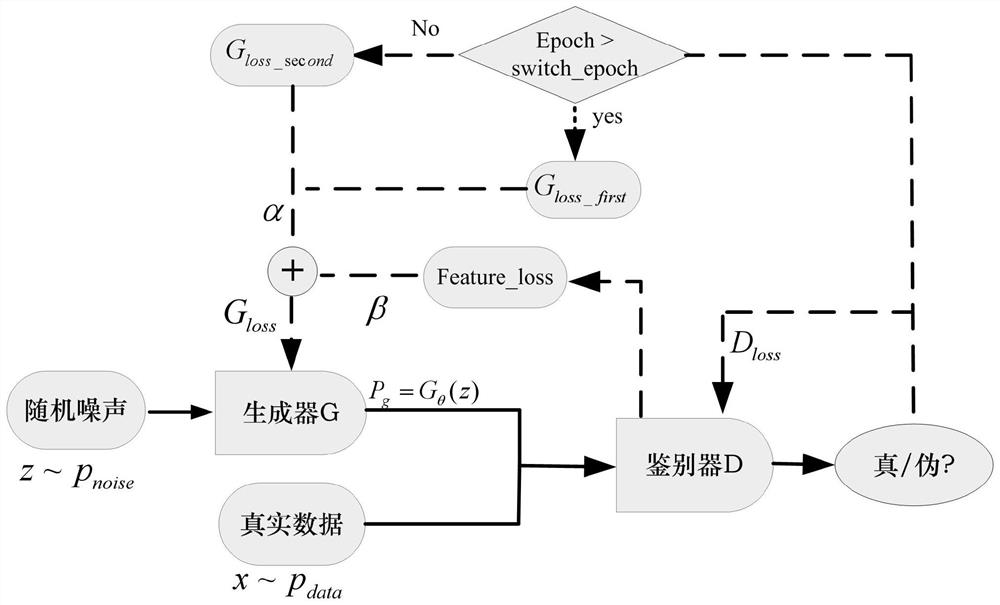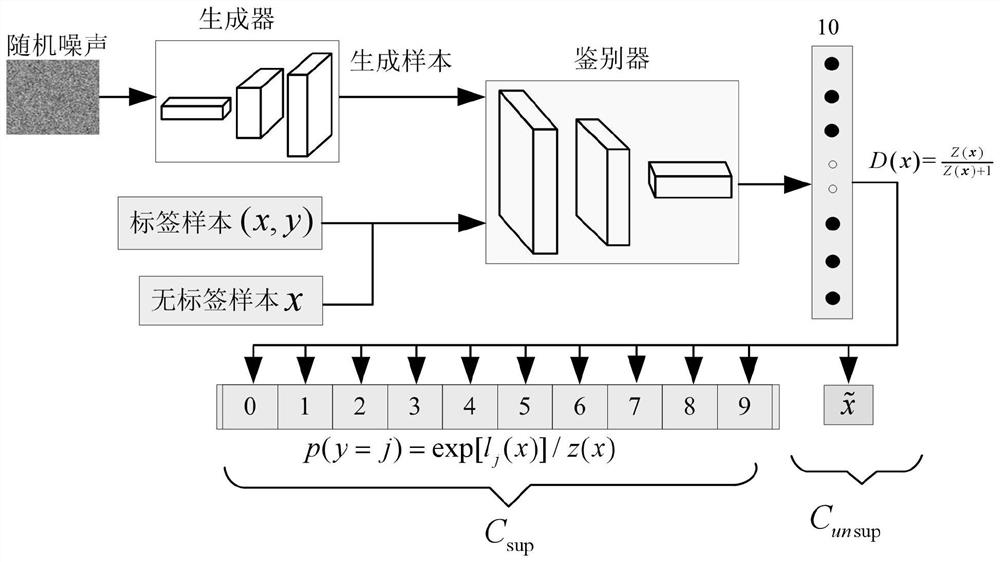A Generative Adversarial Network Method Based on Segmentation Loss
A network and generator technology, applied in the field of deep learning neural network, can solve the problems of robust discriminator feature, poor discriminator feature, etc., to achieve the effect of robust feature, stable training process, and improvement of mode collapse phenomenon
- Summary
- Abstract
- Description
- Claims
- Application Information
AI Technical Summary
Problems solved by technology
Method used
Image
Examples
Embodiment Construction
[0035] Machine learning algorithms can be divided into supervised learning with labels and unsupervised learning without labels. Due to the high cost of obtaining labeled data for supervised learning and the lack of performance of unsupervised learning algorithms, semi-supervised learning (SSL) has become an important research direction for researchers. SSL can learn robust features by using a large number of unlabeled samples and a small number of labeled samples, and has a good performance in image classification. Lee et al. proposed an efficient method of pseudo-labeling unlabeled data to help model training. Rasmus et al. proposed a ladder network based on an autoencoder. The encoder is used for supervised learning, and each layer of the decoder corresponds to the encoder one-to-one to form a ladder for unsupervised learning training.
[0036] In recent years, Deep generative models (DGMs) and Generative Adversarial Networks (GAN) have performed well in semi-supervised le...
PUM
 Login to View More
Login to View More Abstract
Description
Claims
Application Information
 Login to View More
Login to View More - R&D
- Intellectual Property
- Life Sciences
- Materials
- Tech Scout
- Unparalleled Data Quality
- Higher Quality Content
- 60% Fewer Hallucinations
Browse by: Latest US Patents, China's latest patents, Technical Efficacy Thesaurus, Application Domain, Technology Topic, Popular Technical Reports.
© 2025 PatSnap. All rights reserved.Legal|Privacy policy|Modern Slavery Act Transparency Statement|Sitemap|About US| Contact US: help@patsnap.com



